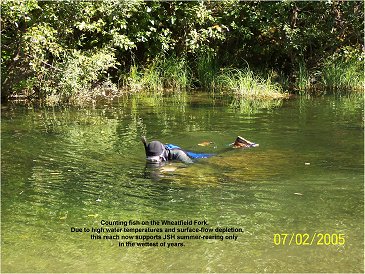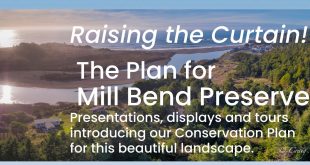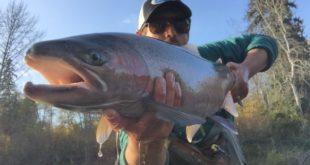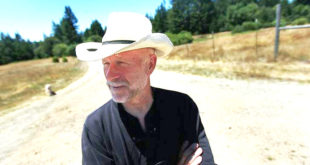Saturday, October 18, 2008
3:00 – 5:00 p.m.
Gualala Community Center
47950 Center St., Gualala
Learn the answer to this burning question as revealed by biologist Richard W. DeHaven, during a seminar from 3:00 – 5:00 p.m. on Saturday, October 18, 2008 at the Gualala Community Center.

Mr. DeHaven retired from the U.S. Fish and Wildlife Service in 2004, after a 4-decade career. Before retiring in 2001, he initiated a 10-year population study of steelhead on the Gualala River. Now, with 8 years tallied in this effort, sufficient results have been compiled to answer the “deathbed” question and reveal such related Gualala secrets as:
- How many steelhead and coho salmon did the river support historically?
- How many steelhead are still returning from the ocean today?
- Why are coho essentially extinct, with little chance of returning soon?
- Why are “band-aid” restoration efforts not the best approach to restoring salmonids?
- What impacts are most effectively killing the river ecosystem?
- What single, most-critical habitat need should be capturing our focus?
- What new strategy exists for best meeting this critical habitat need?
- How can mitigation banking effectively offset future impacts in the watershed?
For the answers to these and other questions, join us from 3:00 – 5:00 p.m. on Saturday, October 18, 2008 at the Gualala Community Center. Admission is free and open to everyone, courtesy of Friends of the Gualala River.
For additional information, contact Mr. DeHaven at drdehave@hotmail.com or 916-206-9934, or visit his website, www.GualalaRiverSteelhead.info.
See also:
Summertime Dewatering: Slow but Sure Death to the River!
 As summer progressed, more and more main-stem, downstream reaches have developed intermittent surface flows characterized by a series of slowly drying pools, or worse – up to hundreds of linear feet of stream without any surface flow at all!
As summer progressed, more and more main-stem, downstream reaches have developed intermittent surface flows characterized by a series of slowly drying pools, or worse – up to hundreds of linear feet of stream without any surface flow at all!
 Friends of Gualala River Protecting the Gualala River watershed and the species living within it
Friends of Gualala River Protecting the Gualala River watershed and the species living within it


